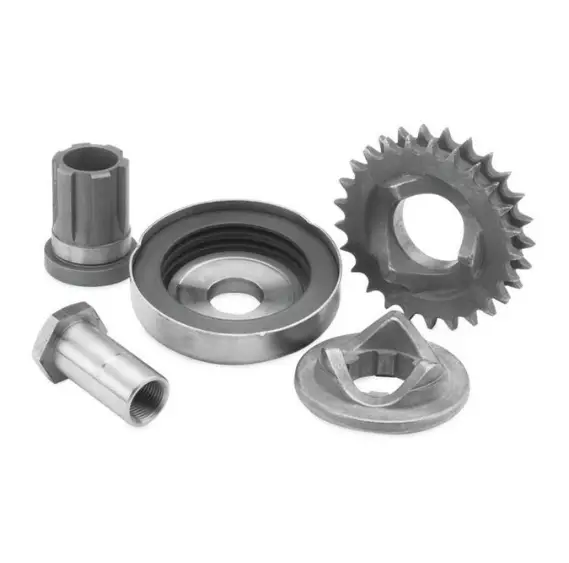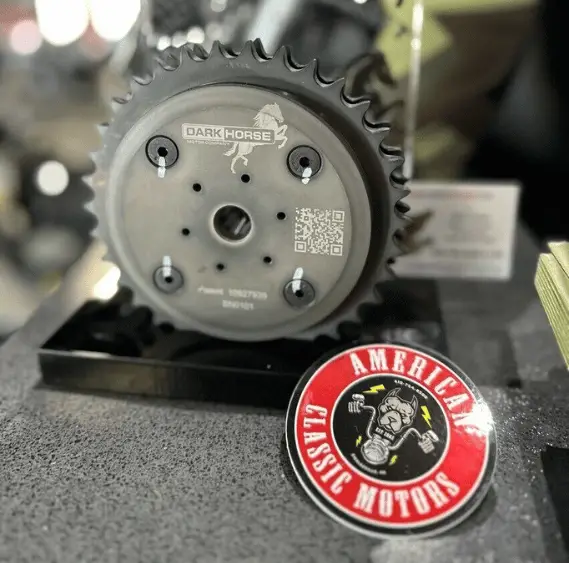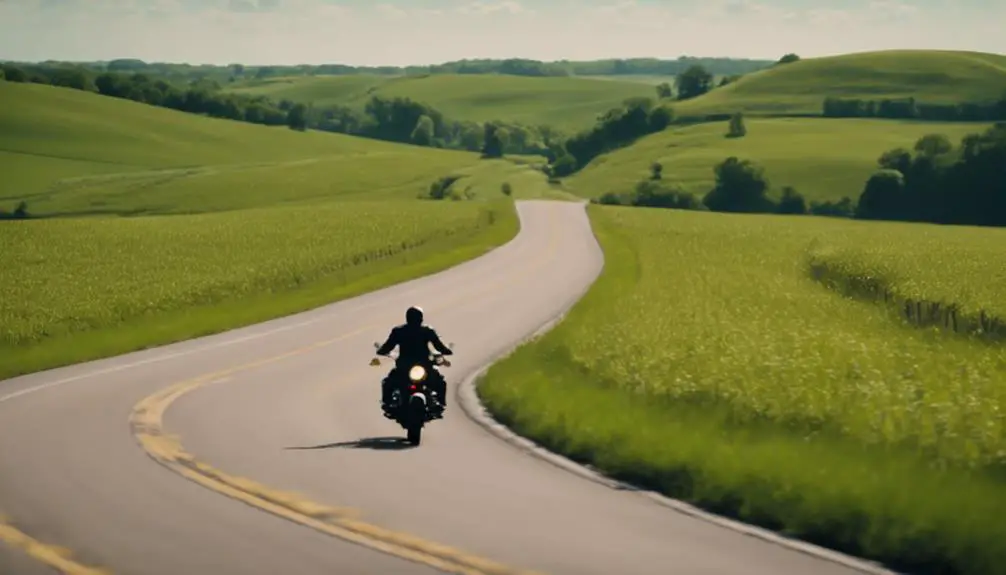When it comes to enhancing the performance and reliability of your Harley-Davidson motorcycle, upgrading the compensator is a key step. The compensator acts as a buffer between the engine’s crankshaft and the transmission, absorbing shocks and reducing tension on the drivetrain. A well-chosen upgrade not only extends the lifespan of your bike’s transmission components but can also lead to a smoother riding experience. Harley owners are often on the lookout for the best compensator upgrades to match their riding style and the demands they place on their bikes.
Selecting the optimal compensator upgrade involves understanding the mechanics inside your Harley and the demands you place upon it. The right compensator improves power delivery and can help prevent premature wear of the motorcycle’s clutch and gearbox. Whether you are a daily rider or use your Harley for long cruising trips, upgrading to a high-quality compensator ensures you get the most out of each ride. High-performance options are available on the market that provide greater durability and long-term savings by postponing the need for replacement. But where do you start, and what should you know beforehand? Let’s talk about it!
Key Takeaways
- Upgrading the compensator can enhance drivetrain performance and bike longevity.
- A suitable compensator aligns with your riding demands, improving overall ride quality.
- High-quality upgrades offer cost efficiency by reducing the frequency of replacements.
Related read: Man o’ War Compensator Review: Enhance Your Rumbling Ride
Understanding Compensators in Harley-Davidsons
When you’re looking to improve the performance of your Harley-Davidson, understanding the compensator’s role is key. This crucial component helps manage engine torque and mitigates vibrations.
Role of the Compensator in Engine Performance
The compensator serves a significant function in your motorcycle’s primary drive system. It’s designed to absorb and cushion the engine’s torque spikes. With every power pulse from your Harley’s motor, the compensator protects adjacent structures from stress by smoothing out these spikes. This helps in maintaining comfortable ride quality and enhancing the overall engine performance of your bike.
Harleys, especially known for their substantial torque and horsepower, require sturdy compensators to cope with the intense forces at play. A well-functioning compensator is pivotal in delivering a smooth transfer of that power from the engine to the rear wheel.
Harley Compensator Design and Functionality
At the heart of the system is the compensator’s design which typically features a 34-tooth (34T) sprocket and a shaft extension. Its construction aims at not only managing the powerful bursts of energy from the motor but also at ensuring the longevity of the drive components.
The compensating sprocket absorbs much of the kinetic energy, resulting in reduced noise and minimal wear. Thus, a robust and reliable compensator directly influences the longevity and efficiency of the primary drive system.
Common Compensator Issues and Troubleshooting
Despite its robust design, a compensator can develop issues, most commonly excessive vibration and premature wear. These problems might manifest as increased noise or a clunky, less refined ride experience.
In troubleshooting, check for wear on the teeth of the compensator sprocket and look for any signs of damage or unusual movement. Some signs of a failing compensator include difficulties in shifting, a knocking noise during low speed maneuvers, or an overall degraded ride quality.
Regular maintenance and inspections can help catch issues early. Upgrading to a higher-quality compensator can offer improved durability and performance if your current one is failing. It’s always wise to consult a professional mechanic for comprehensive troubleshooting and potential replacement.
Related read: Harley Bad Compensator Symptoms: Recognizing Early Signs
Comprehensive Guide to Harley Compensator Upgrades
Whether you’re aiming to enhance reliability, reduce maintenance, or boost overall performance, understanding Harley compensator upgrades is crucial. Here’s a breakdown to inform your decisions for a smooth upgrade.
Analyzing the Need for an Upgrade
You might observe noise, slippage, or hard starting as signs that your Harley’s compensator is due for an upgrade. Upgrading the compensator not only improves reliability but may also lead to better rider comfort and bike performance. Before jumping into your options, assess whether these symptoms indicate wear or if an upgrade is indeed necessary for your riding style.
Top Compensator Upgrade Options
When considering an upgrade, you have several aftermarket options to choose from. The Screamin’ Eagle Big Twin Compensator is a popular choice for its durability. The Baker Compensator, on the other hand, is renowned for its robust performance. Twin Power and Drag Specialties also offer reliable alternatives. Most of these are made in the USA, ensuring quality and compatibility with your bike.
How to Choose the Right Compensator
Your choice should be influenced by compatibility with your motorcycle model and your specific riding style. Balance the price of the compensator with the expected reliability and maintenance benefits. High-quality components like those from S&S often justify their cost over time. Look for reviews and feedback to gauge accuracy and overall performance enhancements offered by the upgrade.
Installation Tips for the Harley Compensator
Installation typically involves about an hour of labor, but the total time can vary depending on your experience and tools. Labor costs might tack on an extra hour, with rates varying by service location. Here are some brief tips:
- Ensure you have the necessary tools and a clean workspace.
- Follow the manufacturer’s instructions meticulously.
- If you’re not confident, it’s wise to enlist the services of a professional for accuracy and safety.
Upgrading your Harley compensator can lead to a noticeable improvement in your bike’s functioning, and with the right choice, you can ride with greater assurance and enjoyment.
Performance and Comfort Enhancements
Upgrading your Harley’s compensator directly impacts the proficiency with which torque is transferred from your engine to your drivetrain, enhancing your motorcycle’s power delivery. A quality upgrade can also provide notable strides in ride quality by diminishing noise and excessive vibration, heightening your overall comfort on rides.
Improving Torque Transfer and Power Delivery
Torque Transfer: When you throttle your Harley, the compensator plays a crucial role in modulating the transfer of torque to the drivetrain. A top-tier compensator ensures more efficient and smooth power delivery, particularly helpful for models like the Road King, Road Glide, or Street Glide.
Power Delivery: The right compensator results in a consistent and reliable power delivery, making troubleshooting a lesser concern, boosting your confidence while you ride.
Reducing Noise and Vibration
Noise: A well-designed compensator will notably reduce the operational noise of your engine, leading to a more serene ride.
Vibration: Addressing excessive vibration not only enhances the comfort but also diminishes wear on other components. It ensures that your travel, whether short or long, is a more enjoyable experience.
Achieving a Smoother Ride
Ride Quality: With the right compensator, such as the Baker compensator known for quiet operation, you’ll notice a marked improvement in ride quality. The smoothness of your ride, particularly when taking off or changing speeds, directly translates to increased rider comfort.
Comfort: Whether you’re cruising around town or embarking on a cross-country journey, a smoother ride with minimal jolts or jerks can significantly enhance your overall riding experience, allowing you to arrive at your destination feeling refreshed.
Specific Model Considerations for Harley Compensator Upgrades
When upgrading your Harley compensator, you need to consider the specific model of your bike because different models may have unique requirements and compatibility issues.
Softails and Touring Models Compensator Insights
Touring Models:
- Electra Glide Ultra Classic – FLHTCU: Known for its extensive use on long rides; an upgraded compensator can ensure smoother operation and longer life.
- Electra Glide Ultra Limited – FLHTK / Low – FLHTKL: Require a compensator that addresses both performance and the additional load from cargo and accessories.
- Road King – FLHR / Road King Police – FLHP: A better compensator provides improved torque handling, especially beneficial for heavier duty use and performance riding.
- Street Glide CVO/SE – FLHXSE, Street Glide Special – FLHXS, Tri Glide Ultra Classic – FLHTCUTG: Demands a high-quality compensator to cope with high-powered engines and the trike’s unique dynamics.
For all these touring and Softail models, an aftermarket compensator that fits correctly and offers durability is key. I prefer the Twin Power compensator for these models.

Twin Power Compensator Sprocket Upgrade Kit (for Softails and Dynas 1994-2006)
Softails Models:
- Softail Deluxe – FLDE / Softail Slim – FLSL: Better compensators can improve engine response and handle the torque of these cruisers.
- Softail Low Rider – FXLR / Low Rider S – FXLRS: A performance-focused upgrade is beneficial for the dynamic riding style often associated with these models.
It’s important to get a compensator designed to be compatible with the exact engine configurations of Softails for optimal performance. (Like the Man O’ War Darkhorse)

Darkhorse Motorsports Man O’ War Compensator Sprocket
Addressing Compensator Requirements for Dynas
Dyna models like the Street Bob – FXBB, Low Rider – FXDL, and Wide Glide – FXDWG stand out for their agility and classic styling. Upgrading the compensator in a Dyna can lead to:
- Improved gear shifting experience
- Reduced noise and vibration during acceleration and deceleration
To select the best compensator, ensure it’s designed for the stresses of the Dyna models, melding resilience with responsiveness. I prefer the Man O’ War for Dynas as well. In my experience it offers a sportier ride compared to other vibration-dampening focused alternatives.
Frequently Asked Questions
When considering upgrades to your Harley Davidson, the compensator is a component that’s often overlooked, yet it plays a crucial role in your bike’s performance. This section aims to address some of the common questions you might have about Harley compensator upgrades.
What are the top compensator upgrades for a Harley Twin Cam engine?
For Harley Twin Cam engines, top compensator upgrades include the Screamin’ Eagle Heavy-Duty Compensator and the Baker Drivetrain Compensator. These upgrades offer increased durability and improved performance over the standard compensator.
How does the Dark Horse Compensator compare to other options on the market?
The Dark Horse Man O’ War compensator is esteemed among Harley riders for its superior performance, which often stands out when compared to other options such as the OEM compensator and the Baker Attitude Adjuster. Its advanced design aims to deliver smoother operation and longevity.
What should I expect in terms of cost for replacing the compensator on my Harley Davidson?
Replacing a Harley compensator can cost between $350 and $900 for both parts and labor. The part itself typically costs between $250 and $500, with labor costing about an hour at varying hourly rates depending on the service location.
What improvements can a Baker Compensator offer over the stock Harley model?
The Baker Compensator is engineered for noise reduction and a smoother operation. It’s a popular upgrade, particularly for Harley-Davidson touring models with 96″ and 103″ engines and is designed to outperform the stock compensator in terms of longevity and ride quality.
How do I identify if my Harley Davidson needs a compensator replacement?
Look out for loud clunking noises on startup, difficulty in shifting, or a general feeling of roughness during acceleration. These symptoms can indicate a worn-out compensator needing replacement to maintain a smooth and comfortable ride.






Leave a Reply
You must be logged in to post a comment.